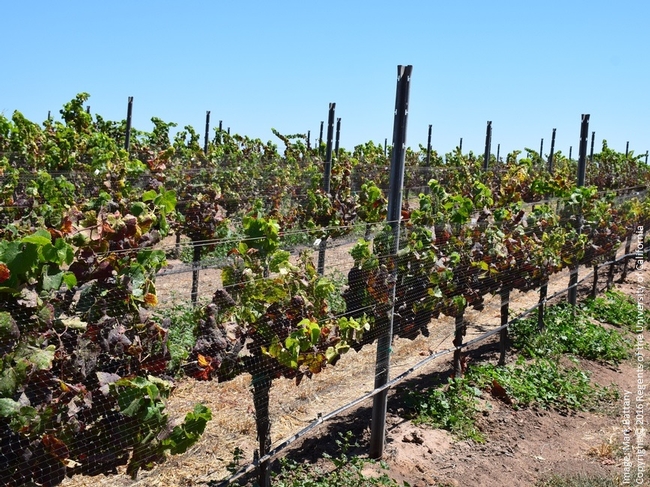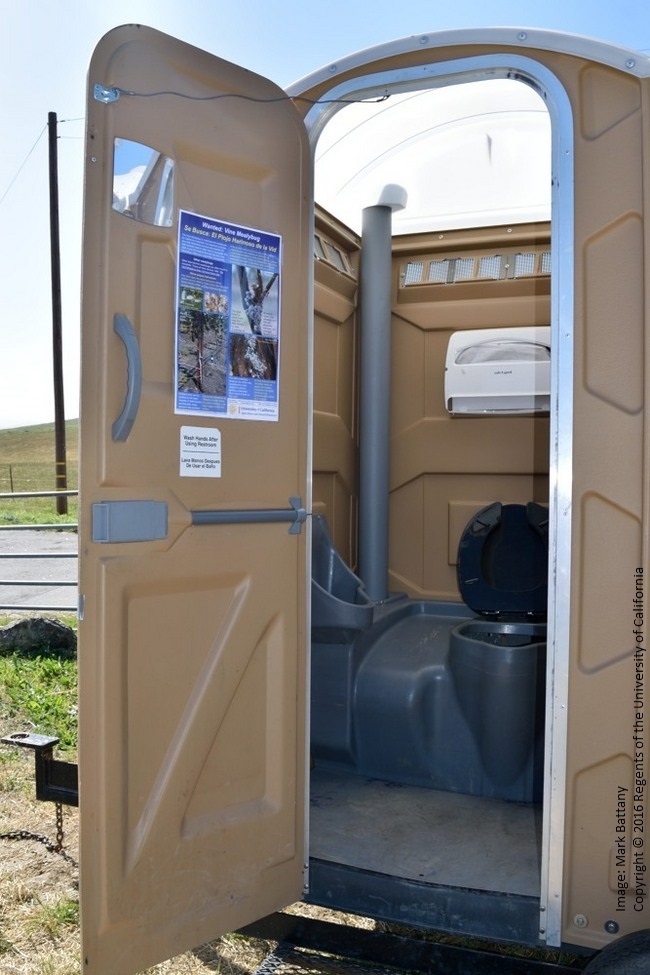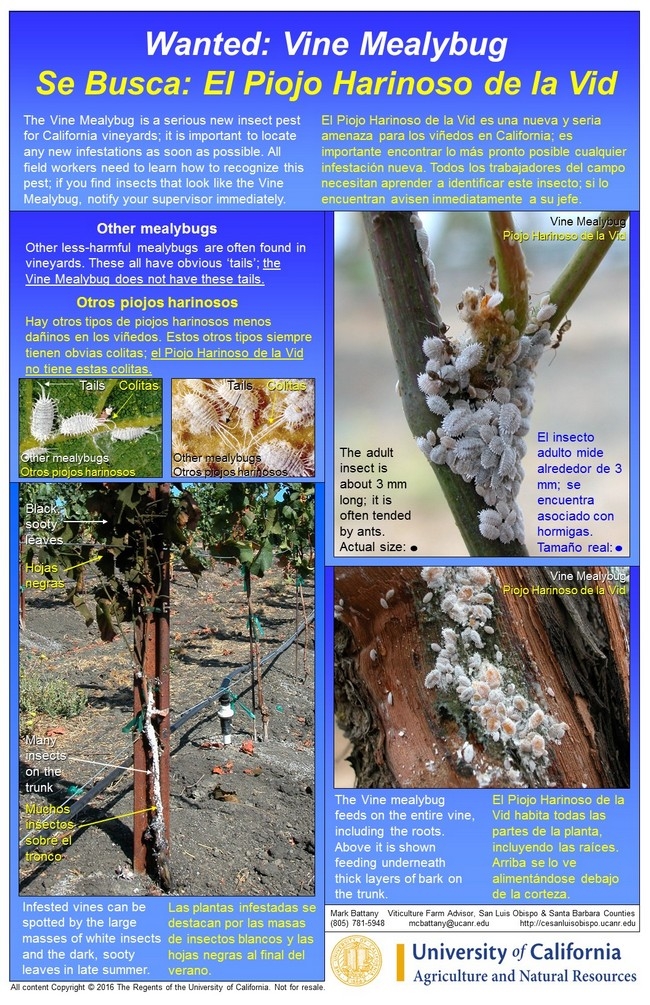The vine mealybug continues to spread in vineyards in both San Luis Obispo and Santa Barbara Counties. New infestations are likely the result of the pest being moved from an existing local infestation to new areas by contaminated field equipment, birds, wind-blown leaves, etc. If new infestations can be found very early while the mealybug populations are still relatively small and isolated, they will be easier to manage and will have minimal impact on harvest. If infestations are not found until after they have become very large, they will be more difficult to manage and will more likely disrupt harvest. Heavy infestations will also have greater potential to continue spreading the pest to other area vineyards.
Inadequately controlled infestations of the vine mealybug can directly reduce fruit quality with their feeding activity, and can indirectly (and irreversibly) reduce fruit quality by spreading leaf roll virus between vines (Figure 2 below). Allowing high populations of this pest in a vineyard will impose a cost on the operation that may not be evident until years later. Therefore it is in the best interest of all growers in the region that populations of this pest be kept as low as is practically possible; finding new infestations early is a key part of this strategy. For more detailed information on the biology and management of this pest, please see the UC IPM Website.
Field workers are in the best position to find new infestations early on because they see and touch every single vine. If they can be trained to recognize the pest and to inform management when they see something suspicious, this can help growers respond to new infestations as quickly as possible. Many growers in California have used the UCCE bilingual vine mealybug identification poster for this purpose since it was first created over a decade ago.
To continue this effort, the UCCE vine mealybug identification posters are currently available free of charge to help area growers train their own workers to identify and report this pest. Please contact me at 805-781-5948 or mcbattany@ucanr.edu to request posters.



